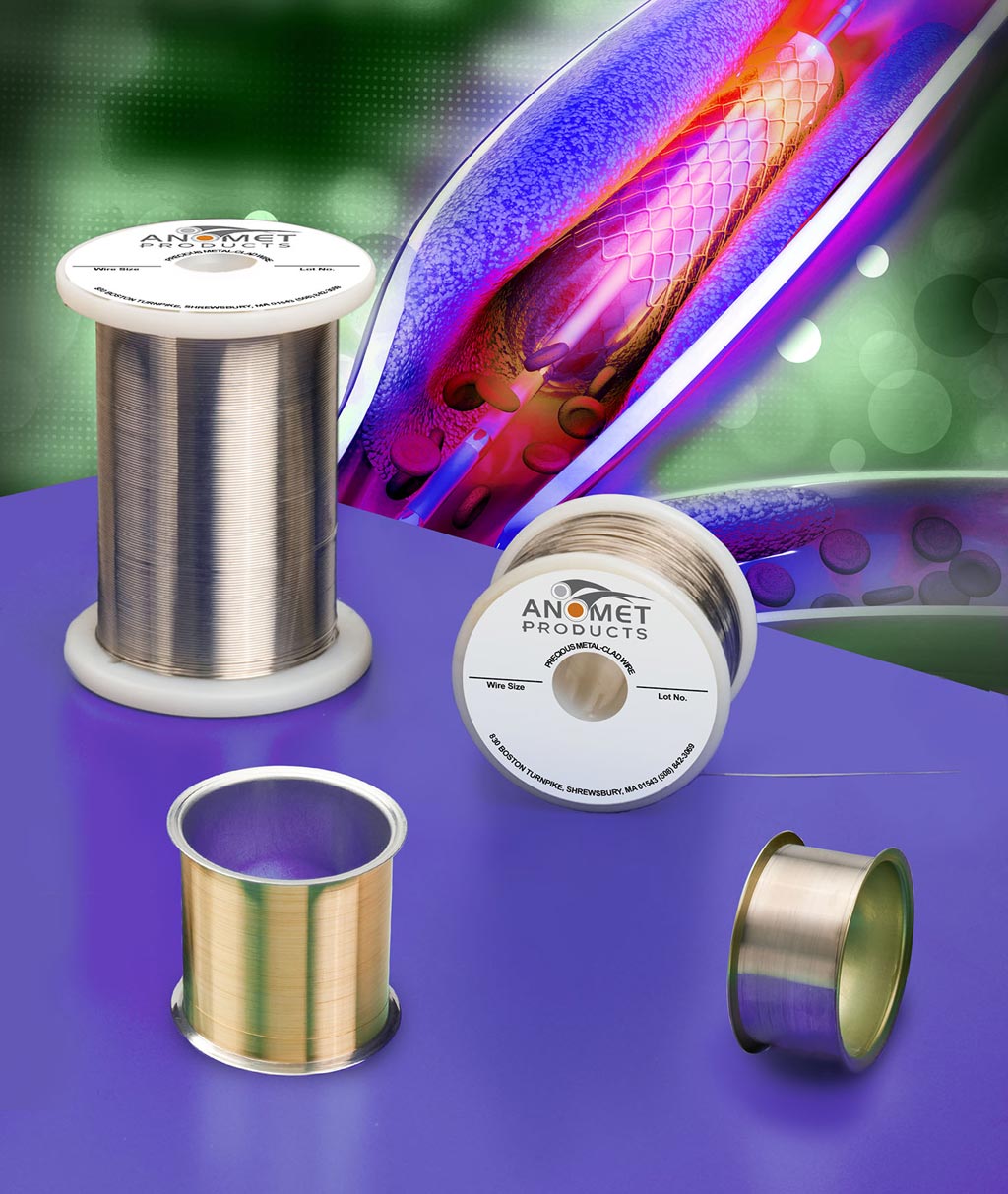Radiopaque Clad Wire Improves Stent Visibility
By MedImaging International staff writers
Posted on 24 Feb 2017
Innovative radiopaque clad wires improve device visibility under fluoroscopy, and serve as an effective alternative to marker bands.Posted on 24 Feb 2017
Anomet Radiopaque Clad Wire is suitable for use with stents, guide wires, and other medical devices, and can be manufactured with different degrees of visibility by modifying the alloy composition and cladding thickness. The clad composite wire is less expensive than solid wire with marker bands, and can be manufactured to precise original equipment manufacturing (OEM) specifications and supplied on spools. The premium medical-grade wires do not flake, blister, or delaminate.

Image: New research suggests radiopaque clad wires enhance implanted devices visability (Photo courtesy of Anomet).
The wire is available in diameters ranging from 0.05 to 1.52mm, and can incorporate gold, platinum-iridium, tantalum, tantalum-tungsten, and similar alloys bonded to high strength wires such as 316LVM stainless steel, nitinol, and MP35N, with a cladding thickness of 2% or more. Wires can include precious metal cores or claddings, such as platinum for oxidation-corrosion resistance and biocompatibility, gold for contact resistance, tantalum for radiopacity under fluoroscopy, and silver or conductivity. Examples of medical-grade clad wires include Tantalum cored stainless steel and Gold clad nitinol.
Typical uses include wires or ribbons for cardiac rhythm management (CRM) devices, pacemakers, leads and heart shocking coils, defibrillators, neurostimulation devices, stents, catheters, and guidewires, biosensors and monitors, continuous glucose monitoring (CGM) devices, brachytherapy seeds, and implantable conductors, among others.
Clad-wires feature a complete metallurgical bond between layers, providing a highly reliable and cost effective alternative to solid wire, while at the same time offering higher ductility and greater formabilty than filled or plated wire.














